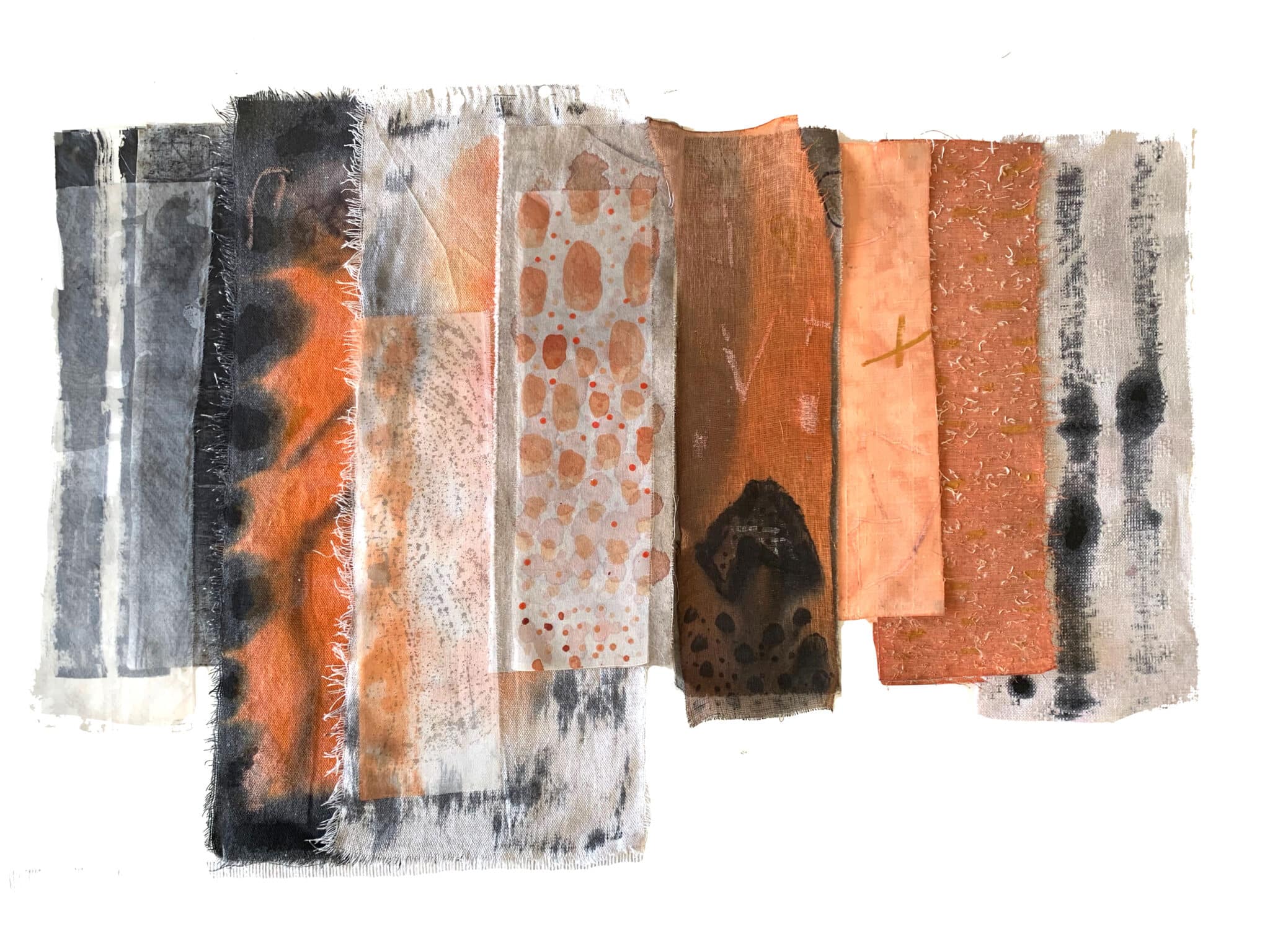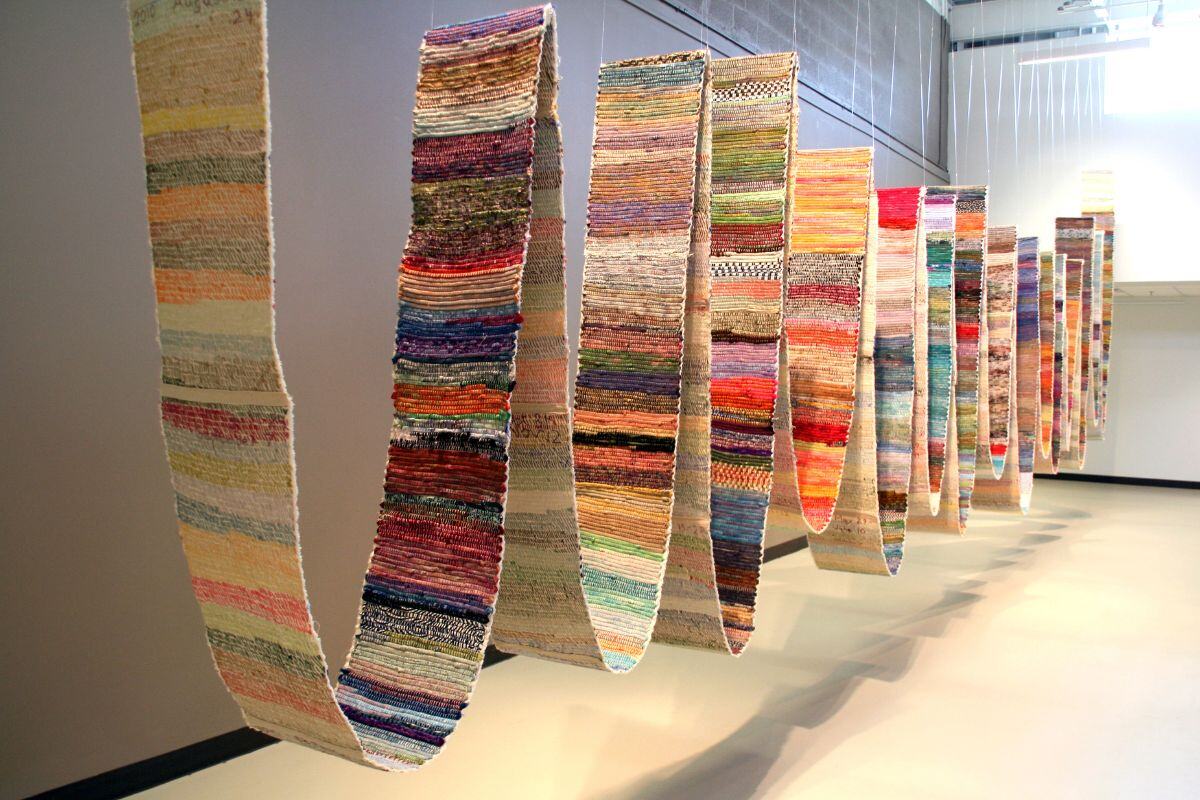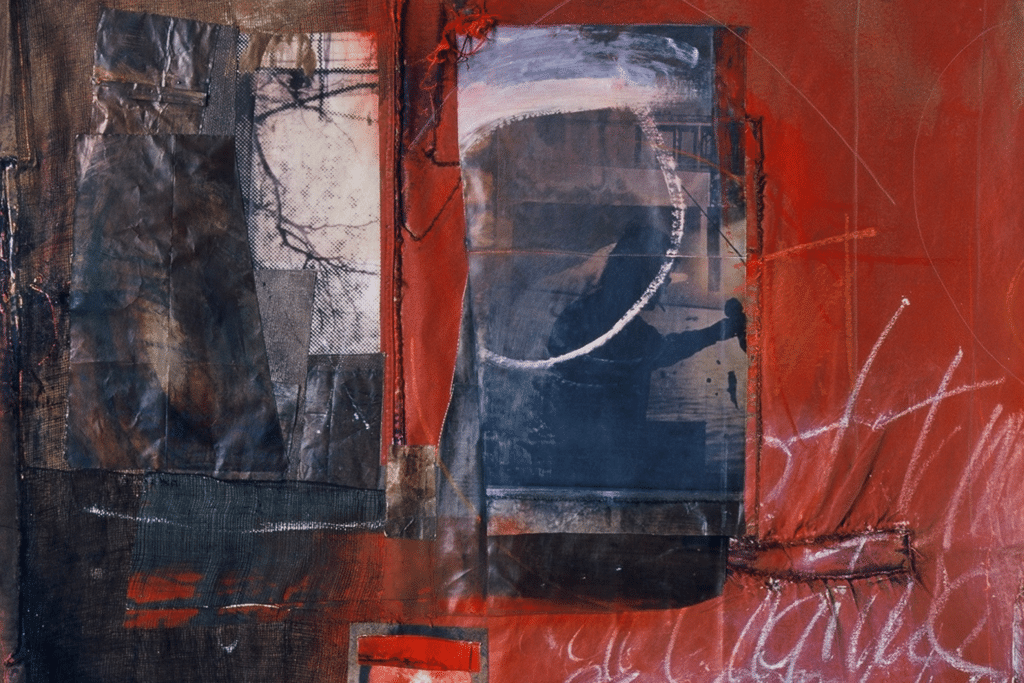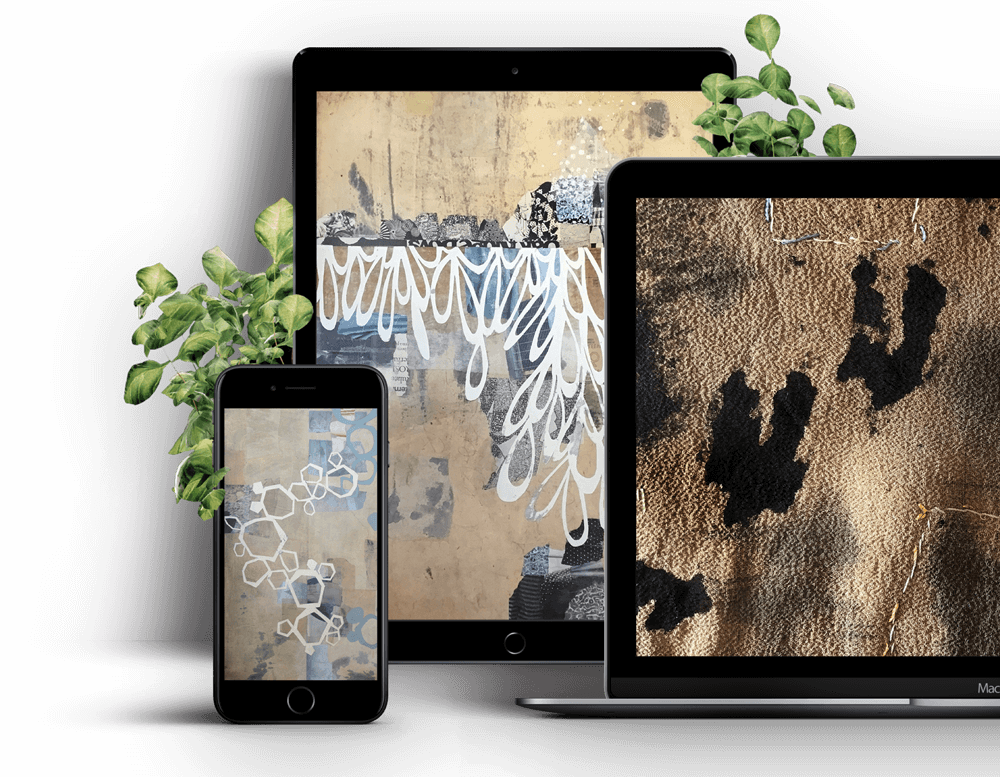Jason Logan: Making Ink
Jason Logan’s Friday Feature Artist Interview can be found at the bottom of this page.
Artist, illustrator and designer Jason Logan says he wanted to dig into the way that meaning and colour get together in the form of natural ink, giving the viewer a kind of dream world of colour to dive into; something fluid, promising and visceral, as natural ink is moving across the page. From the way it swirls in a beaker to the sound it makes when swishing across the paper, the ink has a living energy.
Jason shares his ‘ink tests’, where alchemy and foraging combine to create fantastical abstract forms, which seem to drip or emerge from the little landscapes condensed into tiny bottles. Fibre Arts Take Two was thrilled to welcome Jason Logan, all the way from Toronto, to chat about the wonderful world of ink and colour.
Making Make Ink
Jason says that his book, Make Ink: A Forager’s Guide to Natural Inkmaking, is the guide he wished he had had himself, “As an illustrator,” he says, “I always loved the idea of getting my art supplies at a stationery store, rather than a real art supplies store, and I just always loved ink, the way that it does the fine work of writing, as well as the sort of washy dreamy quality when you add water to it. I just started questioning, like, ‘What exactly is in this thing?’ I just kept asking myself the question and decided I wanted to make my own ink.”
It took an Instagram account to get Make Ink off the ground, “I got my first smartphone,” Jason says, “I started taking pictures of things, and I called it the Toronto Ink Company. Every day I’d kind of take a little picture of what I was up to.
After a year or so of that, I was contacted by this guy who’s a hero of mine, John Gall. He direct messaged me and said, ‘Can we make a book out of this Instagram account?’ And I was like, of course.’”
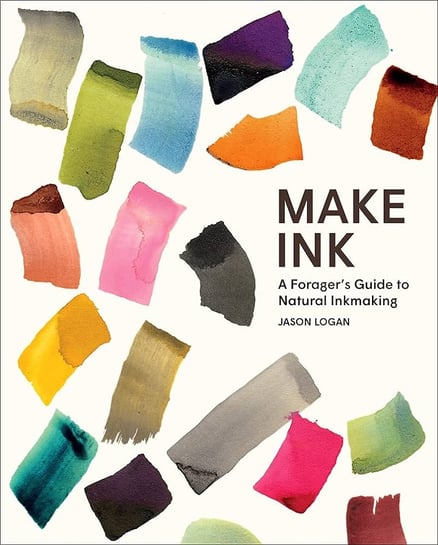
“The guide I wanted”
Part of Jason’s desire to create the guide he wished he had was the dearth of quality ink-making guides.
“There wasn’t much that I could find about how ink was made,” says Jason, “and the stuff that I did find was very deep, like, mediaeval recipes that I couldn’t even understand what the amounts were. It would be like, ‘a finger full of the juice of the blackest of the berry that comes from the man who comes to the thing’ it’s just kind of like witchcraft and alchemy, which I love, but it was really hard to get to the bottom of how do you actually make ink?”
Jason set out to break through the mediaeval obfuscations while retaining the sense of mystery, “The book itself was an exploration of my own question, which was, ‘is there a way to talk about this stuff, make recipes of this stuff and still keep its inky poetic quality intact?’”
Why ink?
“One of the most common questions I get,” says Jason, “is, ‘Wait, why ink? When did you become an ink maker? How did that work?’”
Jason traced the answer to that question long ago: “It started, where it starts, for most people,” he says, “which is like, a stick and some dirt and mud, a couple of rocks together on the seashore. It’s really old, that kind of, like hand-based exploration. And I think hand-based exploration is inherently both art and science because there’s some kind of alchemy going on there.
You’re learning about viscosity, you’re understanding different kinds of minerals. There’s a kind of discovery that goes on in that kind of mud-puddle sorcery. That, to me, is the beginning of real art and science and storytelling, in a way. I’m very drawn to balancing out the art with science.”
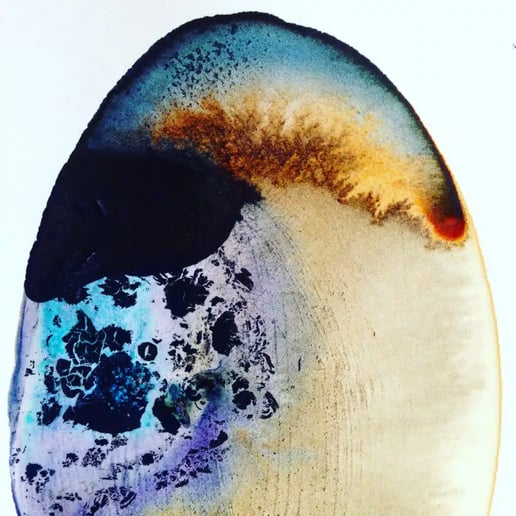
How to be a Colour Wizard
Working on his children’s book, How to be a Colour Wizard. Writing for children has led to some intriguing epiphanies for Jason, “I’m making this book about how colour is a kind of bridge between art and science,” he says, “And I’ve been forced to explain things like jumping electrons in very simple terms. It’s really hard to explain things simply, and you really learn so much when you do.”
Interest in carbon has found deeper focus now in Jason’s eyes, “I’ve always known that I love carbon,” he says, “and everyone says, Well, you know, humans are carbon-based units. All plant matter is carbon-based. We sort of have this vague sense of carbon.
In fact, carbon is a great pattern maker. It is this magical pattern maker that just wants to form complex chains of all different kinds. You can take the carbon dust that’s coming out of the exhaust pipe of your car, do a little bit of magic, and that same carbon can become the crystalline, clear shape of a diamond. It’s the same element… it’s just doing this different kind of pattern.”
The Colour of INK
Before the pandemic, Jason started work on a documentary about ink, The Colour of INK: A Walk on the Wilder Side of Art Supplies, “We managed to raise over a million dollars,’ Jason says, “to make this kind of extraordinary epic film about ink and natural colour around the world. We started filming three or four years ago, and then we got maybe a third of it shot. We went to Mexico and met this guy who milks the tiny sea snails that give this colour that’s sort of the same as that Mediterranean purple colour, and he does it under the light of the moon.”
The problem was, with about two-thirds of a movie complete, the pandemic struck, and things had to change, “We just made a different kind of movie. And it’s a really beautiful documentary in which one of the important characters is the mail system. We’re sending materials to the Carrera marble factory or quarries. And then they’re coming back to me, and I’m waiting, and then I’m sending that back to London, to this Islamic calligrapher to work with all of these amazing materials, moving around the world to talk about how colour brings people together. I actually think it’s a better film than it would have been if it had been me going on all these adventures. It feels way more collectively owned. There’s no single hero to it. Maybe the ink is the hero.”
The uncategorisable
To finish, Jason told Fibre Arts Take Two which colours he finds the most intriguing, “I think that the ones that feel most promising to me,” he says, “are those ones that somehow slipped between the cracks. Like, there’s a sort of a brown, but it has a golden undertone and it’s also got a bit of green in it. It’s those subtle, subtle colours that have yet to be named that, to me, are like an emotion that has yet to be named. As much as I love words and as much of a role that words play in ink, I think that it’s the uncategorisable, unsayable moment in colour where it really is emotional to me.
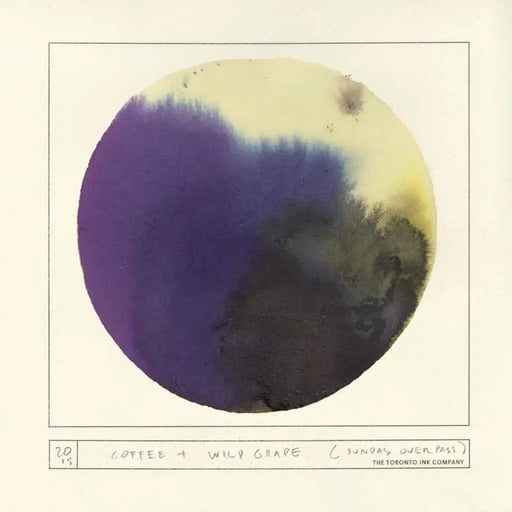
About the artist
Jason S. Logan is a Toronto-based creative director and strategic graphic designer. Recent projects include branding, identity and creative direction for Horses Atelier, a smell map for The New York Times and Creative Direction for Rogers Publishing. Logan is also the author of several books and the founder of the Toronto Ink Company. In 2014, he led the CDTO campaign, an initiative to build an Office of Creative Direction for the City of Toronto.
Notifications
Join Our Newsletter
OUR YOUTUBE CHANNEL
View our interviews and more on our Youtube channel!
OUR FACEBOOK GROUP
Join our Community and stay updated with our upcoming announcements!

